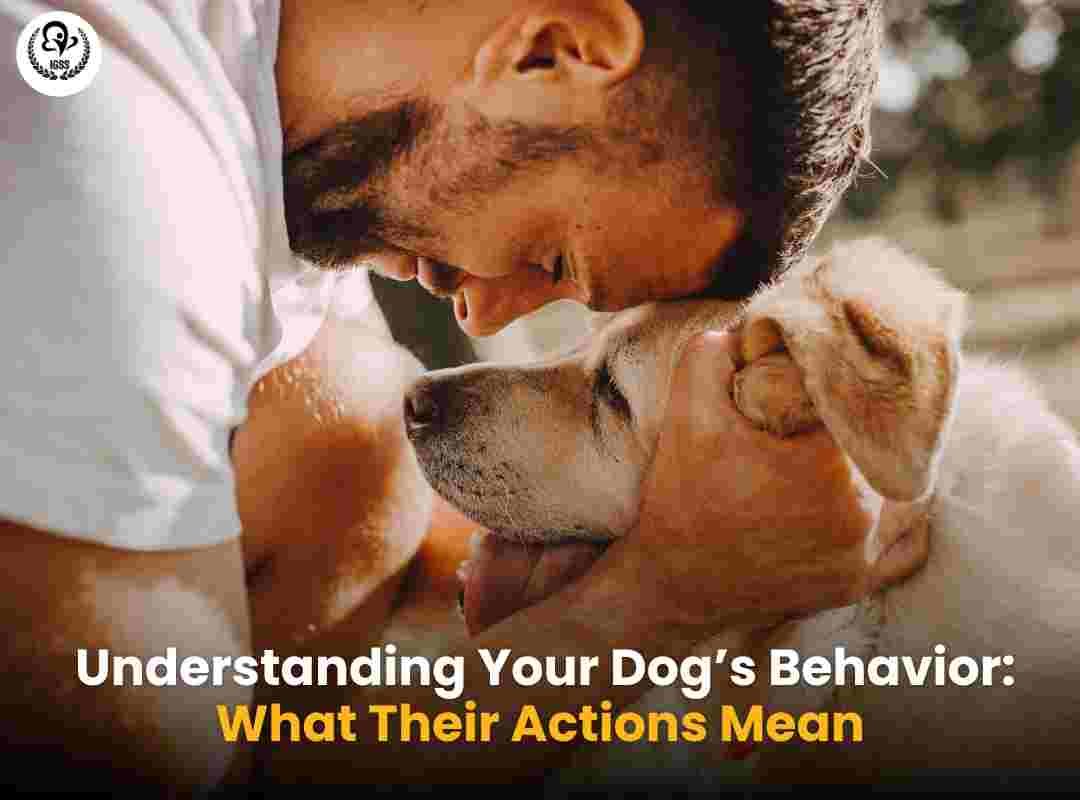
Dogs are fascinating creatures, full of emotions and unique ways of expressing themselves. From wagging their tails to licking your face, every action carries a meaning. Decoding these behaviors is crucial for building a strong relationship with your furry companion. This blog dives into common dog behaviors, their meanings, and how you can strengthen communication with your dog.
Why Understanding Dog Behavior Is Important
Dogs are incredibly intuitive animals, but they don’t speak the same language as us. Understanding their behavior is vital because it:
-
Helps meet their physical and emotional needs.
-
Prevents potential behavior issues.
-
Strengthens your bond with them.
-
Provides early signs of health problems or stress.
When you understand what your dog’s actions mean, you create a safe and loving environment for them to thrive.
Common Dog Behaviors and What They Mean
1. Wagging Tails: A Window to Their Emotions
The wagging tail is iconic in the canine world, but its meanings vary.
-
Happiness: A relaxed tail wagging gently means your dog feels content.
-
Excitement: Fast, wide wags with a wriggling body show eagerness to play or engage.
-
Nervousness: A stiff wag or a low wag can indicate uncertainty or anxiety.
2. Barking: Their Way of Talking
Dogs bark for various reasons, and learning to differentiate between barks is essential.
-
Playful Barking: High-pitched and short barks mean they’re inviting you to play.
-
Alert Barking: Loud, repetitive barking may indicate they sense something unusual.
-
Attention-Seeking: A single or intermittent bark might mean they want food, attention, or to go outside.
3. Licking: Love or Stress?
Licking is a common behavior that has different interpretations.
-
Affection: Dogs lick you to show love and bond with you.
-
Curiosity: Puppies often lick objects or people to explore their surroundings.
-
Anxiety: Excessive licking of themselves or objects can signal stress or boredom.
Understanding Body Language
4. Tail Positions and Movements
-
Neutral Position: Indicates relaxation and comfort.
-
Tucked Tail: A sign of fear, submission, or stress.
-
High and Stiff Tail: Reflects alertness or aggression.
5. Ears and Eyes
-
Erect Ears: Show attention or curiosity.
-
Flattened Ears: Indicate fear or submission.
-
Soft Eyes: Express calmness and trust.
-
Wide Eyes: Signal fear, anxiety, or surprise.
6. Postures and Movements
-
Play Bow: When a dog lowers its front body with its rear up, it’s inviting you to play.
-
Raised Hackles: A sign of excitement, fear, or aggression.
-
Rolling Over: Often a request for belly rubs or a sign of submission.
Other Notable Behaviors
7. Tilting Their Head
When your dog tilts their head, it’s often to focus better on sounds or try to understand what you’re saying. It’s their way of showing curiosity or engagement.
8. Digging
Dogs may dig in the ground or on furniture for various reasons:
-
To hide toys or food.
-
To cool down on hot days.
-
As an instinctual behavior from their ancestors.
9. Chewing
While chewing is natural for dogs, excessive chewing can signal issues.
-
Puppies: Often chew during teething to relieve discomfort.
-
Adults: Chew out of boredom, stress, or a lack of stimulation.
10. Whining
Dogs whine to communicate discomfort, anxiety, or a desire for attention. Pay attention to the context of whining to address their needs.
Tips to Understand Your Dog Better
1. Observe and Learn Their Cues
Each dog is unique. Spend time observing your dog’s habits, postures, and reactions to better understand their emotions and needs.
2. Provide Proper Training
Training your dog to follow commands like “sit,” “stay,” and “leave it” helps create a common language between you. It also prevents confusion in daily interactions.
3. Regular Health Check-Ups
Behavioral changes can sometimes indicate health problems. Regular vet visits ensure your dog is physically healthy and stress-free.
4. Respond to Their Needs
Dogs thrive on attention, exercise, and social interaction. Make sure to provide a balanced routine to keep them happy.
Strengthening the Bond Between You and Your Dog
Understanding and responding to your dog’s actions can help you build a lasting bond. If you're unsure about certain behaviors, don’t hesitate to consult experts or reach out to animal welfare organizations. IGSS, one of the best NGOs in Lucknow, is dedicated to spreading awareness about animal welfare and can offer valuable guidance.
Final Thoughts
Your dog’s behavior is their way of communicating with you. Whether it’s a wagging tail or a curious head tilt, every action holds a meaning. By observing and understanding these cues, you can create a nurturing environment for your furry friend.
Remember, dogs are loyal companions who thrive on love, care, and attention. For more insights into pet care and welfare, organizations like IGSS work tirelessly to promote responsible pet ownership. They’re truly one of the best NGOs for animal-related guidance and support.
Listen to your dog, respond to their needs, and cherish the unspoken bond you share. They’ll love you unconditionally in return.
FAQs
1. Why does my dog follow me everywhere?
Dogs are pack animals and enjoy being close to their humans. Following you around shows loyalty, affection, and sometimes curiosity.
2. Why does my dog eat grass?
Eating grass is a common behavior that may help with digestion or provide nutrients they lack. However, excessive grass-eating might indicate an upset stomach.
3. How can I tell if my dog is anxious or stressed?
Signs of stress include excessive barking, panting, drooling, pacing, or destructive behaviors. Understanding their body language can also help identify stress.
4. Why does my dog tilt its head when I talk?
Head tilting shows they’re trying to focus on your voice or process unfamiliar sounds. It’s their way of showing curiosity and engagement.
5. How can I stop my dog from chewing everything?
Provide plenty of chew toys and engage your dog with physical and mental activities. If chewing persists, consult a vet or trainer to rule out anxiety or health issues.